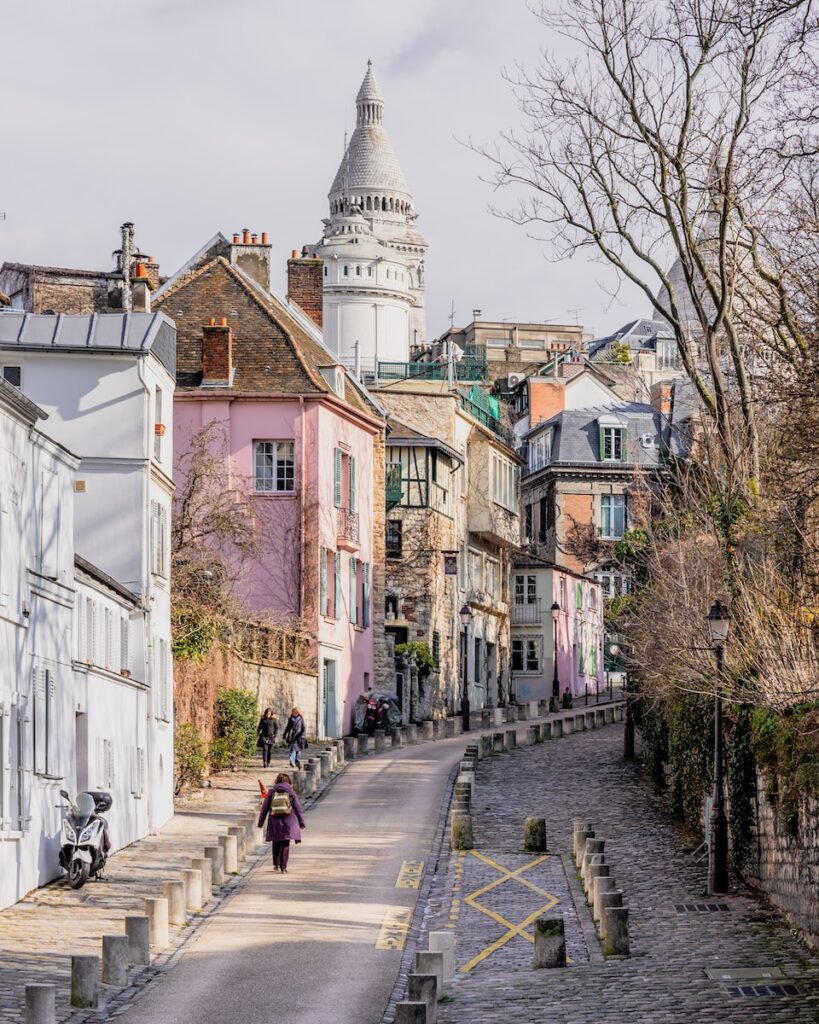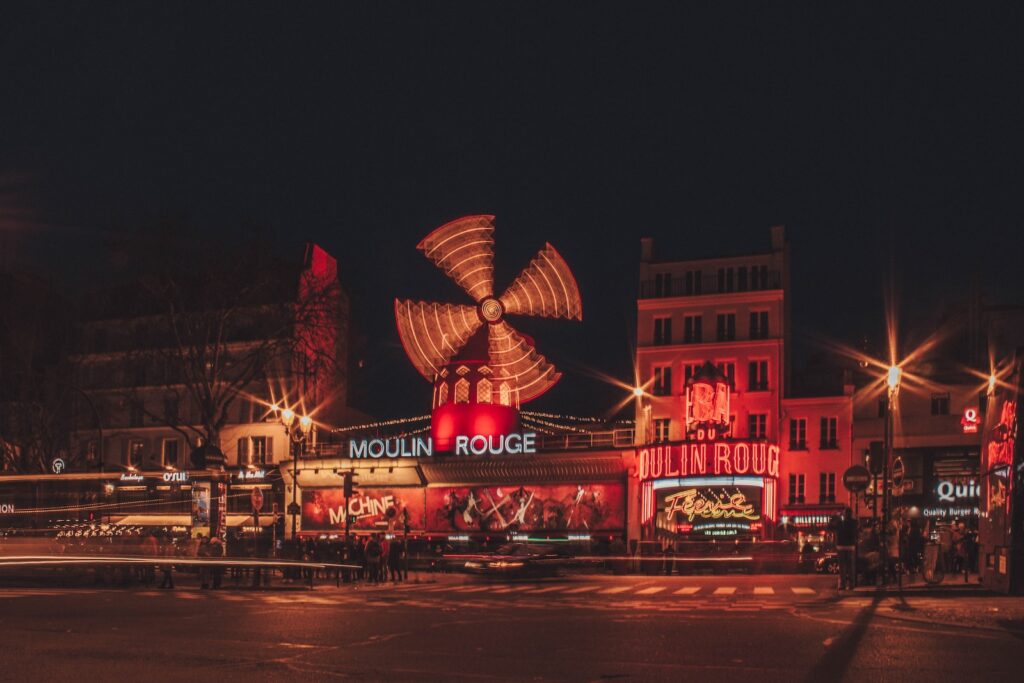Digital Nomads in Paris: Everything You Need to Know
Coming up in this guide: unusual events, riverside bike rides, making friends, lots of eating and drinking, hacks for finding an apartment, and all you need to know about joining the digital nomads in Paris.
You’re a digital nomad.
You’re thinking of moving to Paris.
… but—because you’re reading this guide!—you’re not quite sure:
- If you should live there
- what you can expect from the city
- … and how easy it is to make the move.
(spoiler alert, before we go any further: it’s a great city, it’s good for digital nomads, and you’ll probably love living there).
So, in this guide, your relocation-loving friends at Homelike have brought you everything you want to know about working in the city, living in the city, and joining the digital nomads in Paris.
We’ve included juicy hacks and information on housing, working, making friends, finding a community, pursuing your hobbies, getting a visa, having a dance, and all the city’s eating and drinking.
… and because it can be VERY tough to find a nice place to live in Paris, we’ve brought you some time-saving insider tips on how to find a nice apartment without getting stressed.
Considering joining the digital nomads in Paris? Read on!
Why Paris is a great place for digital nomads
For digital nomads in Paris, some of the biggest perks include:
- Many places to work: you’ll find lots of excellent coworking spaces and—if you know where to look—some great work-friendly cafes. More on that later.
- World-class food: one of the planet’s best cities for food, Paris (of course) is ideal for finding French eats. But because it’s such an international city, you’ll also find meals and morsels from around the world. If you’re a foodie, you’ll love living here.
- Endless things to do: one of the most action-packed cities in the world, there’s nothing you can’t do in Paris. Whatever your hobbies are, you’ll be able to pursue them—and you’ll find hundreds of varied events every evening and weekend.
- It’s easy to make friends: you’ll find long-term expats, other digital nomads, and a load of friendly locals. More detail later—but it’s hard to be lonely in Paris.
- It’s very modern: you get top-quality schools, hospitals, shopping, gyms, and lots more hyper-modern facilities. Any conveniences and amenities you need; they’ll all be excellent.
- A focus on fresh and local: despite being huge, Paris still retains a proud local shopping culture. Expect fresh fruits, vegetables, breads and pastries, lots of cheese and meat stores, and small independent sellers. You won’t find many chains.
- It’s hugely multicultural: there are over 150 nationalities living in Paris. So you’ll find people, food, and culture from around the planet—and anyone can feel at home here.
It’s not (yet!) oversaturated with digital nomads: some digital-nomad hotspots (like Bali, Chiang Mai, Medellin, and Bansko) now feel like they’re home to nothing but digital nomads. But because Paris isn’t one of Europe’s bigger hotspots, it doesn’t have that same vibe

Why Paris isn’t always a great place for digital nomads
Here’s why maybe you won’t enjoy joining the digital nomads in Paris:
- It’s expensive: digital nomads in Paris are often surprised by the city’s high prices. It’s not quite as pricey as London or New York, but it’s more expensive than most European capitals (including both Berlin and Brussels). We’ve covered exact figures later.
- It’s super busy: some digital nomads in Paris struggle with the busy bustle of the city. If you’re not from a big metropolis (and haven’t spent much time in one), you might be a bit overwhelmed at first.
- Lots of traffic and pollution: Paris isn’t quite as clean or quiet as some digital nomads expect. Some streets are dirty, and have lots of trash. And rush-hour traffic can be noisy and disruptive.
- It’s tough to find a nice place to live: because there are so many residents and tourists here (and because people move to the city every day), digital nomads in Paris often struggle to find a nice place to live. So: many digital nomads move into serviced apartments or serviced flats instead.
- Lots of tourists: you’re one of them too, so maybe you don’t care. But, especially in warmer months, Paris is FULL of tourists.
- Winter weather can be bleak: to some people, Paris is only appealing during warmer months (that’s from March until September). Mid-winter minimums can hit 1.8°C (35°F).
It’s huge: if you like the types of places where you can quickly hop from cafe to cafe with your laptop, you might think Paris is too big.
Is a visa required for digital nomads in Paris?
Well…
… that depends on where you’re from, how long you’ll be staying, and exactly what your plans are.
If you’re from another EU/EEA nation, things are super simple and easy: as you probably know, anyone from any EU/EEA country can live in any other EU/EEA country with pretty much no hassle and no bureaucracy:
As stated here, if you want to go live in France for a while, you simply arrive in the country, without a visa or any other document. And you’re free to live, work, and study. That’s it! After arriving, there’s only one thing you (might) need to do:
- If you plan to stay for 3 or more months, you’ll need to register at the town hall (in the municipality where you’re staying) within 3 months of arriving.
- If you’ll be sticking around for a period of less than three months, you don’t need to do anything. Easy!
If you’re NOT from the EU/EEA area, things are more complicated—and you’ll need a visa if you intend to do ANY paid work (even if you’re just doing it on your laptop). Yep, some nationalities can visit for 3 months without a visa (like people from Canada, the UK, and the USA), while some nationalities need a visa for ANY visit.
… but—and here’s the important part—according to this link:
“It is illegal to work remotely as a digital nomad with a French tourist visa or during your visa-free stay.”
So, even if you CAN visit visa-free (or even if you get a short-term non-work visa), it’s a bad idea to do paid work.
That means, yep, many digital nomads in Paris are illegally working in Paris. You can join them, but we don’t recommend it.
So… if you’re from outside the EU/EEA area and you want to work in France, you’ll need to apply for a visa that permits work. Both short-term visas and long-term visas are available. But the vast majority of digital nomads (not from the EU/EEA area) will be interested in a “professional purpose” visa.
Importantly, as of now, THERE IS NO DIGITAL NOMAD VISA FOR FRANCE, and there is no digital nomad visa for Paris. And there are no plans for either of those two visas to be introduced.
Best neighborhoods to stay in Paris
There are 20 different neighborhoods (or, ‘arrondissements’) in Paris—and lots of smaller districts within those neighborhoods…
… so you have loads of choice for finding a place to live.
But the best neighborhoods for most digital nomads in Paris are:
- Montmartre (average monthly rental cost, around €X): for real touristy Paris vibes. You’ll find cobbled streets, chic cafes, hilly views, on-street art, lots of tourists, and the iconic Sacré-Cœur. Yep, it’s a clichéd and pricey place to call home, but it’s super beautiful. Excellent for short-term stays.
- Bastille: a central neighborhood, Bastille is a curious mish-mash of old and new, serving up lifelong locals, historic sites, and some of the city’s top nightlife. Expect jazz bars, lots of opera, busy squares, expensive homes, and excellent public transport.
- Menilmontant: an underrated choice for digital nomads in Paris. Hip, happening, and up-and-coming, Menilmontant offers dive bars, a creative atmosphere, a bunch of offbeat locals, and an exciting underground music scene. Expect street art, kooky cafes, and some reasonably affordable housing.
- Saint Germain (also known as Saint-Germain-des-Prés): super-central, this small area is one of the priciest and most prestigious neighborhoods in Paris. Expect pricey homes, fancy boutiques, lots of upmarket individuals, and plenty of fine-dining. A favorite for high-earning digital nomads in Paris.
- Quartier du Gros-Caillou: home to the Eiffel Tower and the Champs de Mars, it’s a super-touristy district, but somehow still retains a local feel. Very popular with short-term digital nomads in Paris, with lots to see and do. Many homes here are expensive, but it’s also possible to find affordable accommodation on the outskirts.
- … or, if you’re looking for cheaper places to live, consider Bagnolet, Saint-Denis, or the outer areas of the 18th, 19th, and 20th arrondissements. Yep, these places aren’t particularly central: but finding both central AND affordable in Paris is very difficult.
Top tip: we’ve covered these neighborhoods (and many more!) in our big guide to where to live in Paris.

How to find a rental in Paris to spend a few months as a digital nomad
For most digital nomads in Paris, this is THE biggest challenge of a short-term move to the city:
- New people move to the city every day
- Many landlords don’t speak English
- Foreigners often pay a premium
- It’s hard to know what prices you should be paying
- Viewings and negotiations can drag on for weeks
- The affordable places are tiny, cramped, and old
- … and some landlords want you to provide a French guarantor.
Some digital nomads in Paris use AirBnB, while the most popular local websites are pap.fr and fusac.fr. Another option is Facebook, where you’ll find lots of groups offering both short-term and long-term rentals.
But… because it’s so tough to find a nice place to live, many digital nomads in Paris move into a serviced apartment or a serviced flat. It’s by far the easiest option: you won’t spend endless hours searching and viewing, you won’t need to deal with landlords, and you won’t spend your first few weeks in Paris being a big stressed mess.
To see why so many other digital nomads choose them, check out our homes and apartments. They’re all cozy, comfortable, fully-furnished, and ready to move into today. And they’re great for both living and working. Simple!
… and to get you started on your home-hunting, here’s a list of our favorite apartments in Paris (with a helpful map!).
Best areas for restaurants and bars in Barcelona
Many digital nomads in Paris choose the city for its hefty food and drink scene.
Here’s where they hang out:
- Le Marais: the food and drink offerings in Marais are super-varied, featuring street food, high-end stuff, foreign eats, ancient local bistros, and a load of well-loved cocktail bars. If you’re looking for something fancy, head to Michelin-starred Restaurant H. Also check out Marché des Enfants Rouges—it’s been serving up market fayre for 400 years, and it’s now a mish-mash of retro French food and modern international eats.
- Canal Saint-Martin: come here for waterside munching and sipping. You’ll find many Parisian picnickers (so bring food and friends), along with a load of canalside bars and restaurants. A popular favorite is right-on-the-water Chez Prune, serving up a load of French classics.
- Saint Germain: well-known for wine bars and brasseries, two of the most-loved venues here are Café de Flore (a hyper-famous retro place) and almost-next-door Les Deux Magots (serving traditional French eats for almost 150 years).
- La Chapelle: one of the best neighborhoods in Paris for no-frills food, affordable street-food-style places, and international eats (including stuff from North Africa, the Middle East, and Southeast Asia). One top spot is Marché de l’Olive, a food market with lots of local suppliers.
Bastille: the neighborhood’s Rue de Charonne street is full of varied restaurants, while other parts of the district offer street food, gourmet food markets, and lots of kooky cocktail bars. Retro-style Bluebird is a big favorite for its unique and unusual cocktails
Best areas for Paris nightlife
Here’s where the party-loving digital nomads in Paris like to hang out:
- Oberkampf: one of the most hip and trendy districts in the city, you’ll find a diverse variety of nightlife. Expect live indie music, late-night techno, lots of young people, and a bunch of speakeasy-style places.
- Pigalle: sitting super-close to Montmartre, Pigalle is home to the iconic Moulin Rouge—and also serves up cocktail bars, raunchy hangouts, and some other cabaret spots. Though it was once the city’s red-light district, it’s now (vaguely) more tame.
- Quartier Latin: it’s home to Sorbonne University—so it’s popular with students and young people. You’ll get hidden jazz bars, cheap student spots, dive bars, and lots of tucked-away on-street drinking.
- Montparnasse: featuring late-night bistros and many wine and cocktail bars, Montparnasse is a popular hangout with digital nomads in Paris. Two big highlights are hipster-filled 48 Cocktail Club, and under-the-radar La Quincave (for laid-back vibes, a small space, and excellent wine).
Le Marais: most famous for its LGBTQ+ nightlife. Highlights include L’Etage (great drag shows), Andy Wahloo (North African-inspired decor and quirky drinks), and Heaven Party Paris (one of the most popular Paris gay clubs). Tip: Le Marais and Oberkampf are right beside one another—so if you REALLY like nightlife, this is the area for you.
Top things to do in Paris
Many digital nomads move to Paris because, well… there’s loads of stuff to do.
Highlights include:
- Sightseeing: some of the most famous sights include The Eiffel Tower, Notre-Dame Cathedral, Sacré-Cœur Basilica, and the Arc de Triomphe. Lesser-known recommendations from us include the bizarre sewer museum, Trocadéro Gardens (for excellent views of the Eiffel Tower), and the Paris Catacombs.
- Gallery-visiting: famous galleries include the Louvre, the Centre Pompidou, and Musée de l’Orangerie. Lesser-known spots include Maison Européenne de la Photographie (for regularly changing photo exhibits in an old mansion) and Atelier des Lumières (many interactive exhibitions, and immersive video and sound).
- Museum-hopping: the city is home to almost 150 museums—and top choices (aside from all the arty ones we’ve already covered) include Musée de la Musique (with lots of ancient instruments), Musée des Arts et Métiers (an industrial design museum), and Cité des Sciences et de l’Industrie (the biggest science museum in Europe).
- Waterside exploring: hire a bike, and cycle along Canal Saint-Martin and the city’s River Seine. Other watery funfests include Lac Daumesnil and the little River Marne. Top tip: walk or cycle from the Eiffel Tower to the Bois de Vincennes for a sight-studded adventure.
- Shopping: you’ll find little bakeries and grocery stores in various parts of the city, while the iconic Champs-Élysées offers high-end boutiques. You’ll also find quirky stuff at the Saint-Ouen Flea Market.
- Live shows: Paris is one of the world’s best cities for live performances. Expect cabarets, jazz (especially in Saint Germain), classical concerts (head to the Philharmonie de Paris), many small nightlife venues, lots of independent places, and whatever else you might want to listen to.
- Events: digital nomads in Paris can spend months in the city without getting bored. Every night and every weekend, you’ll find endless options, including festivals, live music, street food, comedy nights, theater, unique and odd stuff, and anything else you can imagine. For checking up-to-date events, here’s the best resource.
- Park-exploring: though Paris isn’t as green as some European cities, around 10% of the city is parkland. Top green spaces include Bois de Vincennes (the biggest public park in Paris, and home to a zoo), Luxembourg Gardens (home to a palace, and a whole load of delicate landscaping), and Parc des Buttes-Chaumont (featuring a lake, a suspension bridge, and great views of the city).
For much more, here are the 24 best things to do in Paris (for travelers, locals, short-term-stayers, and digital nomads!).

Best cafes and co-working spaces for working in Paris
Some of the best co-working spaces for digital nomads in Paris are:
- Hubsy: one of the city’s most laid-back options. Expect friendly people, decent coffee, good snacks, low prices, busy vibes, and a whole load of wooden decor.
- WeWork La Fayette: more inspiring than most other WeWork branches, it’s halfway between corporate and casual. They have a great rooftop terrace.
- Remix Coworking Saint-Lazare: a big favorite for digital nomads in Paris, this place is friendly and welcoming, and has a lovely community vibe. If you want to work AND make friends, it’s ideal.
- Unicorners Café Coworking: halfway between a cafe and a co-working space, this place is homely and well-lit… and the coffee is excellent.
- MyCowork Beaubourg: one of the more corporate and quiet options, but still very friendly. They offer lots of private rooms and meeting rooms.
… if you’re one of those digital nomads who prefers to work in cafes, your top options are:
- Les Pères Populaires: rustic and loveable, this is a well-known spot among digital nomads in Paris. It serves food, beer, wine, coffee, and anything else you might want. It has sofas, tables, and some hidden-away places to sit with your laptop.
- Strada Café: good sandwiches, great coffee, and many popular sweet treats. It’s simple, modern, and minimalistic, and they only allow laptops on weekdays.
- La Recyclerie: a lesser-known spot, but excellent for digital nomads in Paris. Located in the city’s north, it’s an urban garden—with eco-friendly policies, friendly faces, and a massive number of tables.
Nuage Café: designed specifically for remote workers, this is a cafe where you won’t feel bad for hanging around all day. You pay per hour (or per day), then all drinks and cakes are included. It’s charming, the decor is kooky, and they have many different spaces and rooms.
Public transport in Paris
Paris has a brilliant public transport system.
It’s made up of:
- Metros (16 lines and 300 stations)
- Trains (5 different lines)
- Trams (4 different lines)
- … and buses (64 different routes).
All modes of transport are split across six different zones:
The very-central part of the city is zone 1, and the most outskirt part of the city is zone 6.
Although you might use all different types of public transport, you’ll probably use the metro most often. It’s fast and popular, and it’s the most extensive of all the options.
To get around, you should use a Passe Navigo, which lets you ride all forms of public transport. You can get a physical version of the pass, or an on-phone version… then you use it to tap on and off each time you use public transport. As of now, you can’t use your debit card to tap on and off public transport, even if you have a French bank account.
Some digital nomads in Paris hope to get around exclusively by bicycle. Though it’s possible (and though the city is home to a bike-sharing scheme), Paris isn’t as cycle-friendly as some other European cities. That said, you’ll find reasonable infrastructure, and a reasonable number of cycle lanes.
The cost of living in Paris
When you join the digital nomads in Paris, here are the prices you can expect to pay:
- 1-bedroom apartment in the city center: €1,340
- 1-bedroom apartment outside the city center: €935
- 3-bedroom apartment in the city center: €2,960
- One-way ticket on local public transport: €2.10
- Regular monthly pass for local public transport: €84
- Meal for 1 at an inexpensive restaurant: €15
- 3-course meal for 2 people at a mid-range restaurant: €68.50
- Large draught domestic beer in a bar or restaurant: €7
- Regular cappuccino in a cafe or restaurant: €4
- Regular liter of milk from a supermarket: €1.40
- Loaf of white bread from a supermarket: €1.80
- 12 regular eggs from a supermarket: €4.20
- 1kg of chicken breast filets from a supermarket: €14
We’ve taken all the above figures from Numbeo, where you can find up-to-date cost-of-living stats for basically anywhere in the world. Useful!
The expat community for digital nomads in Paris
That’s us done! And that’s everything you need to know about joining the digital nomads in Paris.
As we’ve covered, finding an apartment can be tough, pricey, and time-consuming.
… so if you struggle to find a place to live (insider alert: you probably will!), you might want to do what many other digital nomads in Paris do…
… and move into a serviced apartment or a serviced flat. All of ours are comfy, cozy, fully-furnished, perfect for living and working, and ready to move into today. No stress, no hassle, no fuss, and no spending your first weeks in Paris worrying and panicking.
For more on France’s capital, here’s everything expats in Paris need to know, and our favorite travel hacks for Paris. And for more French cities, here are the 10 best neighborhoods in Marseille, and the 10 best neighborhoods in Lyon.
Thanks for reading, thanks for choosing Homelike, and have an amazing time in Paris. Bye for now!
Digital nomads in Barcelona: final thoughts
Hopefully, we’ve now covered everything you need to know about joining the growing hordes of digital nomads in Barcelona.
Again, if you don’t want to struggle through the intolerable nightmare of attempting to find a nice place to live in the city, we have lots of serviced apartments and serviced flats on our site. They’re all comfy, homely and cozy, they’re all fully furnished, and they’re all ready to move into today.
And if you only want a small place (or a brief one!), we also have lots of studios and short-term rentals.
For more information on moving to Barcelona, check out our guides to being an expat in the city, and everything you need to know about living in Barcelona.
And if you’re considering any other Spanish cities, here’s information on the best neighborhoods in Seville, the best neighborhoods in Malaga, and everything you need to know about living in Valencia.
Thanks for reading, thanks for choosing Homelike, and we’ll (hopefully!) see you on the sunny sands of Barcelona!






















